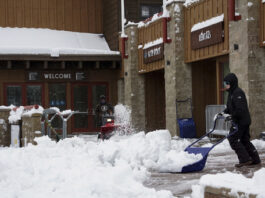August marks the beginning of high school football season across various regions, yet it also brings extreme heat and humidity, exacerbated by climate change. This poses a significant risk to players donning heavy gear, leading to suspected heat-related deaths, including that of Semaj Wilkins, a 14-year-old who collapsed during practice in Alabama. According to the Korey Stringer Institute at the University of Connecticut, 58 players have died from exertional heatstroke between 1992 and 2024, with offensive and defensive linemen weighing over 300 pounds being particularly vulnerable due to the heat trapping nature of their equipment.
High school football players are at a significantly higher risk of heat-related illnesses compared to other sports, with one study indicating they are 11 times more likely to suffer from such ailments. Although preventable, the lack of comprehensive heat acclimatization policies in most states often hinders the implementation of necessary guidelines to reduce the occurrences of heat-related illnesses. For instance, only a quarter of states have protocols in place, such as regulating rest periods and the use of wet-bulb globe temperatures to determine safe practice conditions.
States like Georgia, Louisiana, New Jersey, and New Hampshire have shown exemplary heat acclimatization guidance, emphasizing the importance of weather modifications, cold water immersion tubs on-site, and efficient protocols for treating heat-related illnesses. Louisiana’s policy, for instance, involves monitoring wet-bulb globe temperatures during practice sessions and providing players with means to cool down and hydrate adequately, showcasing a commitment to player safety.
While some schools have sufficient resources and protocols in place to ensure player safety during high-intensity practice sessions, others, like Baker High School in Baker, face challenges due to limited funding for adequate amenities. However, coaches like James Dartez prioritize their players’ health above all else, implementing measures like wet-bulb globe temperature monitoring, regular water breaks, and immediate medical attention for players feeling unwell, even if it means cutting a practice short when necessary.
In conclusion, ensuring the safety and well-being of high school football players during intense summer practices requires the collective efforts of coaches, administrators, and policymakers to implement and uphold effective heat acclimatization policies, ultimately reducing the risk of heat-related illnesses and fatalities in the sport.
